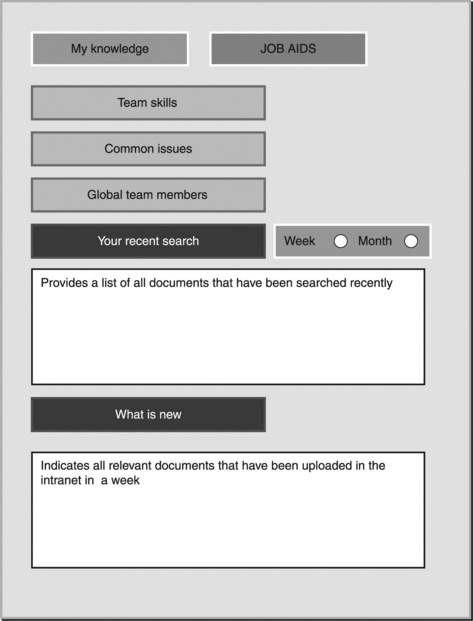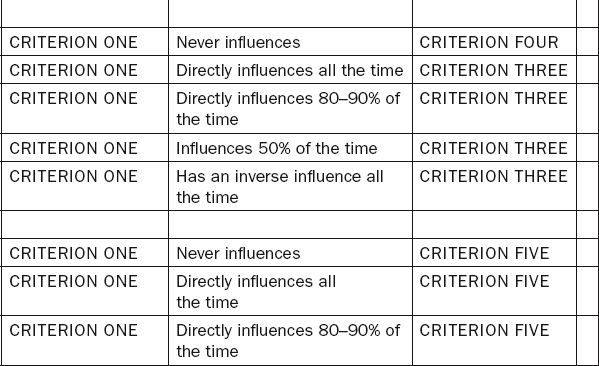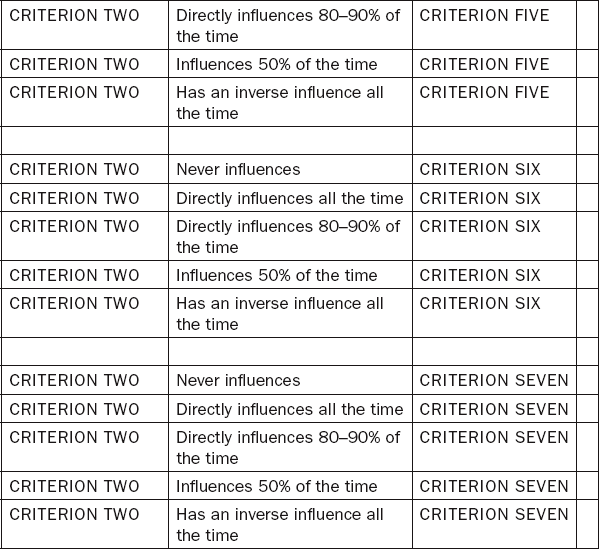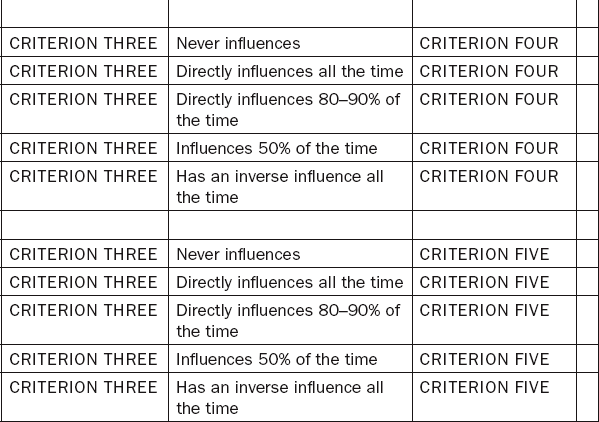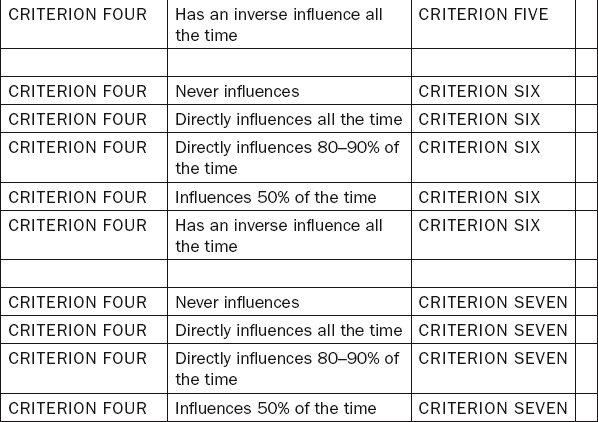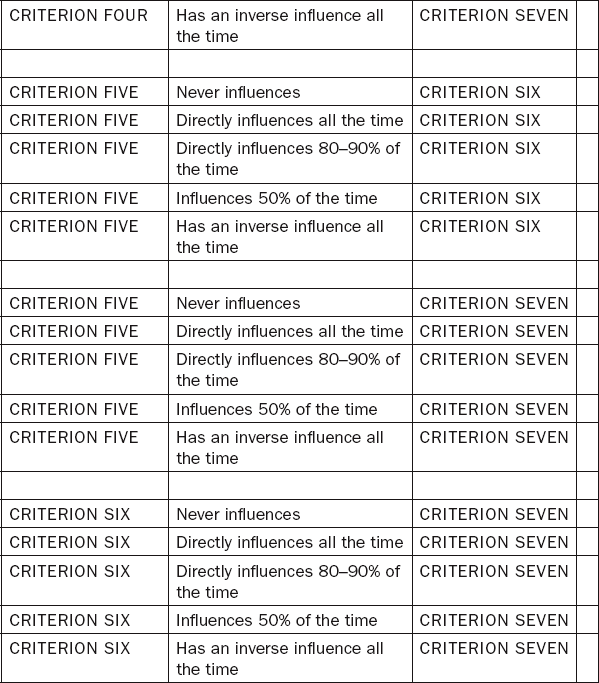Appendix
It has always been a mystery as to why there is a gap between the book value and the market value of firms. Intangibles such as belief in the firm’s performance, leadership or goodwill in accounting terms, tend to enhance the market value of the share. If that is the case, how could something as intangible as that be measured?
At present, organisations proudly announce, ‘Employees are our assets’. If we consider the above critically the key question then becomes, how would organisations accomplish this if they had the opportunity to do it? To quantify the intangibles it is necessary to understand what organisations mean when they say, ‘We value our employees’. Understanding the drivers could help us break the value code. These are the drivers that the market sees as the value behind firms.
Is it possible to quantify employee’s lifetime value (ELTV)? That is the question. Can qualities such as leadership, knowledge, experience and expertise of employees be quantified?
The concept of value
Exploring why certain firms have higher market value points to market expectations about the organisation as a combination of tangibles and intangibles. Tangibles could be identified from book value and the difference between market value and book value gives the intangible value, which is about leadership, resident knowledge, expertise, experience, etc. This intangible value is the market’s future assumption about the firm and can be called the organisation’s lifetime value (OLTV).
Quantifying employee value
Any function performed in an organisation generates or contributes to generating revenue. Employees contribute to an organisation’s existence by performing their tasks. By doing so, they deliver value to the organisation. Employee value could, therefore, be described as the total of their knowledge, experience, expertise, leadership, etc. However, there is always a discrepancy as to what the employees perceive as value delivered and what the organisations perceive as value delivered.
Employee value = knowledge + expertise + experience + leadership + value delivered.
Individuals contribute to the organisation by performing certain functions.
To start quantification, we consider the value generated by employees to be equal to the total revenue generated by the company or group. This value could be factored based on the level of responsibility at individual levels.
To improve it further, replacement cost of the employee needs to be determined. This should be added to the value obtained in step 1:
![]() the gap that has to be paid to get a replacement;
the gap that has to be paid to get a replacement;
![]() quantifying time lost before the new person starts delivering;
quantifying time lost before the new person starts delivering;
![]() quantifying training required to be provided to the recruit;
quantifying training required to be provided to the recruit;
![]() possible losses that could occur if the person walks away with customers. In this case, the value of customers’ needs to be added to the individual’s value;
possible losses that could occur if the person walks away with customers. In this case, the value of customers’ needs to be added to the individual’s value;
![]() possible efforts required by other staff to keep the business running. Their value contribution should also be added to the employee value.
possible efforts required by other staff to keep the business running. Their value contribution should also be added to the employee value.
Investments made by the organisation for the individual so far on training activities need to be added as part of the employee value.
The next step is quantifying value delivered by an employee while performing their job. An organisation has to assess the employee like a consultant and look at what they would pay a consultant to deliver value. This cost also needs to be added to the employee value.
To quantify experience and knowledge, the firm has to identify value additions by an employee resulting in savings or new business opportunities.
![]() Employees should be allowed to assert themselves as value providers and could be asked to solve a range of issues in the organisation.
Employees should be allowed to assert themselves as value providers and could be asked to solve a range of issues in the organisation.
![]() Employees should be allowed to establish their area of expertise. This could be as narrow as, for example, gene mapping in particular species, or as broad as general management.
Employees should be allowed to establish their area of expertise. This could be as narrow as, for example, gene mapping in particular species, or as broad as general management.
![]() Other employees could then be made to look at these value providers for solutions, advice and expert recommendations. Value providers could then be evaluated based on the number of queries they have attended to and on feedback from individual employees as to how they felt the issue was resolved. In addition to this, value resulting by means of cost savings or new business opportunities should be quantified.
Other employees could then be made to look at these value providers for solutions, advice and expert recommendations. Value providers could then be evaluated based on the number of queries they have attended to and on feedback from individual employees as to how they felt the issue was resolved. In addition to this, value resulting by means of cost savings or new business opportunities should be quantified.
![]() If the employee (value provider) solves a problem or helps another employee to perform a task, the value generated by the other employee as a result of this should be added to the employee under consideration.
If the employee (value provider) solves a problem or helps another employee to perform a task, the value generated by the other employee as a result of this should be added to the employee under consideration.
![]() In this way, the employee value would increase or decrease depending on the what value they generate and the value provided as seen by others in the organisation.
In this way, the employee value would increase or decrease depending on the what value they generate and the value provided as seen by others in the organisation.
This method would help identify experts, leaders and middle managers, apart from quantifying employee value, and help reduce mismatches between the individual’s versus the organisation’s perceptions about value delivered.
Employee lifetime value
This model is one way to help organisations represent the current value of an employee (see illustration on p. 129). The sum of all employee current values yields the total employee value. Employee current value is then expressed as a percentage of total employee value. This percentage multiplied with OLTV yields ELTV. An employee’s value ceases if an organisation ceases to exist. This is the underlying assumption made in calculating ELTV.
Knowledge management – a case study
This document discusses how technology can be used to create knowledge capture mechanisms. The organisation in question is a transnational firm operating in the fast moving consumer goods (FMCG) market. The company employees were rotated, on average once every two years, to a new role. These employees on an average spent three months settling into their new roles and another month training people before they left. Knowledge that is resident within employees was not getting transferred to others effectively. Although handover packs were supposed to address this problem, it was not possible to transfer all that had been learnt to the incoming employee. People always knew more than what they could verbalise and could explain better than they could write. Knowledge that was resident in the organisation was also scattered and not stored properly. Hence people refrained from using information available and repeatedly asked their peer groups for information, wasting precious employee time and in most cases ‘reinventing the wheel’.
Creating a system to capture experience and knowledge was seen as a way to solve this problem. Although knowledge management encompasses a huge area the functionality proposed here addresses a vital area that concerns three main issues that exist in this organisation. They are:
Documentation functionality addresses these issues, which are illustrated below.
Functionality 1: how information is stored
My Library is a function that would help users store information and retrieve it easily. The idea is a combination of Amazon’s website and the Oracle database structure. The site will track the click streams of the users and present a list of documents that will be useful to perform their job. Users can rank these documents and based on the ranking the document stays or goes down the list of documents that come up during a search.
Authorised content owners load information in a team space or any website and categorise the document based on various criteria. For example, they could use a document code like ARPhilCC0203. This could be a code used to store documents for AR – accounts receivable in Phil – Philippines about CC (cost centre); 02 03 could be the year and month when the document was loaded. When authorised content owners post a document they will be able to create a document code using a drop-down menu. This will give a list of codes that have been created and will also allow users to create a new code to help other users store information in a systematic way.
Functionality 2: how information is found
Retrieving stored information is the second major hurdle users face. It is useful to develop a search agent similar to that of Amazon. The search agent for Amazon looks for information most commonly used by users or similar groups of users globally and stores the links to the information. Whenever someone loads new information in these links the search agent stores this latest link and when the user logs in or when they search for specific criteria, any new documents that have been loaded, or the most frequently used documents for that problem, automatically surface.
The idea for combining a search using multiple search criteria came from the advanced search capabilities provided by search engines like Google or Inktomi. The concept of these search engines can be expanded further by allowing the system to combine a list of different search criteria such as most commonly used words, most frequently accessed documents, most highly ranked document, using document codes. The system suggested would store the combination of the search criteria and all the links that surfaced during that search.
As this organisation is using a Google-based search it is suggested that the search agent be used to track any new documents that have been loaded in the user’s area of interest and to place it on the top when the user searches for new information. Thus users will have access to the latest information on any subject. Combining search criteria and storing it reduces search costs and presents relevant information to the user.
Functionality 3: how information/experience is transferred
By allowing users to create a community and by providing a default community information system could be easily interchanged. The idea for this came from MSN messenger and Yahoo user groups. Creating a community allows the spread of knowledge globally. Using functionalities like white board that MSN provides allows users to train others on line and answer queries.
To illustrate, one possible application suggested is ‘job responsibilities’. Old and existing users will be allowed to describe their roles and responsibilities using a drop-down menu. Once a new user logs on the system it will list skills required to perform that particular job. Clicking further would allow users to know about specific skills required and provide automatic access to all relevant documents. This portion will be linked to the documentation’s functionality. Users can click further to visit sites that contain those skills.
Users will get to look at common issues that surface in that role by clicking on ‘Common issues’. Further clicking will allow them to see how the issue has been resolved by peers in that region or globally. This section will be linked to issue tracking and users will always get to know about the most relevant issues that exist. By using a list of search criteria users can create a library of most common issues and their solutions.
Users could also access their community by clicking on ‘My global team members’. They could either indulge in a direct chat with that user or could post their message on a message board. In this way they have access to a pool of information that is very specific. They should use the existing software used by the R&D group in this organisation to solve this problem. Breaking the issue of knowledge capture into smaller manageable portions is the first step this organisation has to take. This is for information that can be codified. For information that is tacit some other techniques exist. But for all this to happen employees need to see the value of this activity. Culture plays a major role here. Addressing the cultural challenges that go with it, should be the primary responsibility of the team. It is recommended that the organisation involve all the employees concerned during the early stage of the development process. This will create a buy-in at the emotional and intellectual level, which is half the battle won.
Self-questionnaire
This research instrument is intended to help advance our understanding of how people add value to organisations. By your completing this instrument we shall be able to analyse systematically how you think about this question.
We constantly evaluate our colleagues and subordinates in our day-today life and are also constantly evaluated. This exercise will help identify the criteria you use to evaluate colleagues and subordinates at the subconscious level in the organisation. Some of your criteria may be similar and some very different from the criteria held by others. The key is to pull out every criterion that is important to you as your thought process is one of the key factors in helping shape the organisation’s perspective of how people should be evaluated.
To find out what your criteria are please follow the instructions given below. Please fill it in and keep it ready and we will use it in the interview.
Part 1
In this part I want you to list on the work sheet your criteria if you were asked to assess the value of your employees and colleagues (see page 136). Value here implies the value they add to a task, or the work they do, or the role they perform. You need to come up with at least 10–15 different criteria. You might generate more – in fact the more the better. No one will see this information except us, unless and until you express your consent to share the information. It takes time for your thoughts to start to flow, so we will explain how to go about it.
Stuck, Stalled, Experiencing a writers block: If you have difficulties generating criteria please use the guidelines/diagram opposite and question yourself along the A, B and C lines.
Notice that there are three circles, I, ME and THEY.
![]() Line A (from I to ME). This represents criteria you think you have that help you to deliver value to your organisation.
Line A (from I to ME). This represents criteria you think you have that help you to deliver value to your organisation.
![]() Line B (from I to They) This represents your criteria for the many people with whom you come into contact during the working day to deliver in order to add value to your organisation.
Line B (from I to They) This represents your criteria for the many people with whom you come into contact during the working day to deliver in order to add value to your organisation.
![]() Line C (from They to ME) This represents criteria that other people in your organisation think you have to deliver value, i.e. what the people you meet at work expect from you.
Line C (from They to ME) This represents criteria that other people in your organisation think you have to deliver value, i.e. what the people you meet at work expect from you.
Part 2
Looking at each of the criteria that you would use to measure the value of your employees or colleagues, you probably consider some as being more important than others. This level of importance varies from person to person because people with different experience tend to give more or less importance to the same criteria. There are three ways of looking at the criteria. The first way is to decide how important they are to you and the second way is to think how you can apply those criteria to others, say your subordinates, and the third way is how others say your boss can apply the criteria to you.
As you read the list of your criteria you might think of other points that you would like to add. Please add them to the list. This is perfectly all right.
Do you have any other criteria to add? If yes, please add them to the list you had completed earlier. Having done this, please proceed.
Ranking 1
The first ranking process looks at personal importance. Please sort all the criteria that you have listed by reflecting how important they are to you personally. For example, you could choose ‘team work’ and you can then decide how important it is to you.
There are three rankings that you can assign. They are:
On the work sheet, under the ‘ranking 1’ first column, write the numbers 1, 2 or 3 based on what you think about each criterion. Say, for example, if you have listed ten criteria then you need to look at all ten and put 1 to those most important to you, put 2 to the criteria that you think are in between and 3 to criteria that you think are least important in the grey column.
In case of doubt about certain criteria, don’t hesitate. Write in between, which is 2.
Now only look at the criteria that you ranked 1 (i.e. initially ranked clearly as most important to me) and rank only those criteria in the following order (this forces you to rank them on real importance):
On the work sheet under the ‘Ranking 1’ second column write A, B or C. Say, for example, if you have ranked four criteria of the ten as 1, look at only those four criteria, determine which is clearly most important to you and then put A next to it in the second column, B for in between and C for the less important ones.
Ranking 2
The second ranking looks at how much control and influence you have over these criteria. Please sort all the criteria that you have listed by reflecting on how you think you can influence them. As mentioned earlier, if team work is one of the criteria, you need to look at the criteria and see to what extent you can influence your colleague or subordinate to become team workers and then rank the influence you can exert on them. There are three rankings that you can assign. They are:
On the work sheet, under the ‘Ranking 2’ first column, write the numbers 4, 5 or 6 based on what you think about each criterion. Say, for example, if you have come up with ten criteria then you need to look at all ten and see what you can influence most and put 4 next to that, put 5 to the criteria that you think are in between and 6 to criteria that you think you can influence least in the first column. This ranking once again has to be done for all the criteria.
In case of doubt about a certain criterion, don’t hesitate. Select in between, which is 5.
Now only look at the criteria ranked 4 (where you mentioned you have clear influence over these) and rank those criteria only in the following order:
On the work sheet under the ‘Ranking 2’ second column write A, B or C. For example, if you have ranked three criteria of the ten as 4 then look at only those three criteria, determine what is clearly most important to you and then put A next to it, B for in between and C for the least important one in the second column.
Ranking 3
The third ranking looks at how you can get influenced by others on these criteria. Please sort all the criteria that you have listed by reflecting on how you think they influence you. As mentioned earlier, if team work is one of the criteria, you need to look at the criteria and see how your peers or your boss can influence you to work in teams and then you rank the influence they can exert over you.
There are three rankings that you can assign. They are:
On the work sheet under the ‘Ranking 3’ first column write the numbers 7, 8 or 9 based on what you think about each criterion. Once again, if you have come up with ten criteria then you need to look at all ten, determine which are most important to you and put 7 next to them, put 8 to the criteria that you think are in between and 9 to criteria that you think are least important in the first column.
This ranking once again has to be done for all the criteria.
In case of doubt about a certain criteria, don’t hesitate. Select in between, which is 8.
Now only look at the criteria ranked 7 (where you mentioned they were most influential over me) and rank only those criteria in the following order:
On the work sheet under the ‘Ranking 3’ second column write A, B or C. For example, if you have marked three criteria as 7 then look at only those three criteria, determine which is clearly most important to you and then put A next to it, B for in between and C for the least important one in the second column.
Sorting a Top List
You need to select typically from six criteria from the list you have sorted and ranked so far.
To do this, we would like you to start with the criteria that you coded and mentioned as 1A, 1B and 1C. If you have six criteria that scored this way, then you may stop here. If you don’t have six criteria, then we need to revisit the list. Please go to the criteria that you have ranked 2 (in between in terms of personal importance) and select the criteria that you think are most important in that section.
We need to find those criteria that are not only important, but are also different from one another. So, when you see your list of criteria, ask yourself whether they differ enough, or do you think they are pretty similar?
If you find two criteria (we shall start to call them nodes for this next exercise) similar, then select the one that has the clearest meaning to you and discard the other. Every time you discard a node (criterion) you need to replace it with one you consider most important from the criteria you have ranked earlier.
You now should have a list of your top six criteria in terms of personal importance. If yes, proceed. Now you need to identify one more criterion to go with these six criteria. Look at criteria still not in your top six which you have marked 4A and 7A and select the one that is more important to you. This is criterion number 7.
The next issue is to figure out how you see these various criteria relating to each other. You will have more insight and knowledge about some than others, so we shall get you to start to work on those criteria that you know most about. So, look at the list of seven criteria that you now have. You need to pick one criterion that has very clear meaning to you, and make that number 1 criterion. I am not asking you to automatically pick the most important criterion, but the simplest and easiest one for you to think about. Now, do this for the remaining six criteria, and then rewrite them on the table provided below. You need to do this to avoid later confusion.
This section provides an example to explain the different relationships that are possible. You need to look at all the criteria that you have listed and then use worksheet 2 to identify the relationships.
These are the possible relationships between the criteria:
2. Direct relationship all the time.
3. Direct relationship 80–90% of the time.
To make it clear, we will give you an example. Let us assume that you have three criteria or nodes, which are …
Step 1
The first (and easiest) choice is that the two criteria you are comparing never influence each other. So, in the example given, you might feel that … The more I keep a regular bedtime … (criterion 1) Never influences whether the car will start the next morning … (criterion 2)
If, however, ‘never’ is not an appropriate choice, then you need to examine the logical choices offered in the second step.
Step 2
For all the combinations where you did not say never, this means that there is some sort of relationship between these criteria. But what? To identify the specific relationship you need to go through the various choices given below. These choices range from clear and unequivocal to more tentative and equivocal relationships. Again, we follow the worked example. The choices are:
Choice 1: ‘direct’
We know there is no relationship between criterion 1 and criterion 2, but when you compare 1 with 3, you might decide:
| 1. The more I keep a regular bedtime | 3. The more energetic I feel during the day |
Then you need to circle or tick ‘has a direct influence on’ criteria.
Choice 2: ‘direct influence 80–90 per cent of the time’
Of course, you won’t always feel that there is an unequivocal choice. You will also have several equivocal choices. One of the choices is to qualify the alternatives proposed with a question mark. For example:
| 1. The more I keep a regular bedtime | 3. The more? I feel energetic during the day |
This means roughly 80 to 90 per cent of the times, if you keep regular bedtime, you feel energetic during the day (and that roughly 10 to 20 per cent of the time the more you keep regular bedtime you don’t!).
What distinguishes an equivocal choice from a certain or uncertain one is the presence of and. Then you need to tick the ‘direct influence 80–90 per cent of the time’ criterion.
Choice 3: ‘influences 50 per cent of the time – in other words neutral’
Now, sometimes you will see the relationship really as a 50:50. A highly equivocal choice is the following:
This means you feel energetic 50 per cent of the time and not energetic the remaining 50 per cent of the time. Your energy levels are related to your sleep hours, but it can go either way. Then you need to tick the ‘influences 50 per cent of the time’ criterion.


